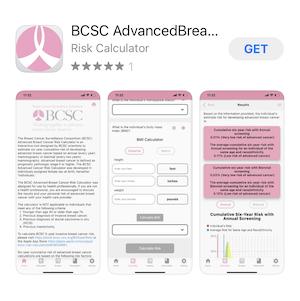
Globally, breast cancer is the leading cancer among women. Yet, determining who will develop breast cancer is still a major challenge for the medical community. A new tool, developed by UC San Francisco’s Karla Kerlikowske, MD, and colleagues at other institutions, now helps to calculate risk for those who may develop advanced breast cancer that goes undiagnosed despite regular screenings.
What drove the development of the “risk calculator”?
We needed a risk calculator to guide how often women should be screened and whether supplemental imaging is needed based on risk of cancers with the worst prognosis. Several years ago, I began working with colleagues from the Breast Cancer Surveillance Consortium (BCSC), to develop a risk calculator for advanced breast cancer. We decided a risk prediction tool for advanced cancer could have the greatest clinical impact by identifying those at greatest risk of breast cancer death and offering them targeted screening strategies.
We designed the Advanced Breast Cancer Risk Calculator as an interactive tool to estimate patients’ six-year cumulative risk of developing advanced breast cancer based on annual mammography (every year) or biennial (every two years) mammography.
What risk factors are used to calculate advanced breast cancer risk?
Breast density, age, race and ethnicity, family history in a first-degree relative, previous breast biopsies and benign biopsy results, body mass index, and menopausal status.
What is advanced breast cancer and how does it differ from other forms of breast cancer?
Advanced breast cancer is defined as prognostic pathologic stage II or higher. Advanced breast cancers are tumors that are large and may have spread to lymph nodes or have other characteristics associated with poorer prognosis such as being high grade and estrogen receptor negative. They require surgery and systemic treatment, and detecting breast cancers through screening before they become advanced may avert deaths from breast cancer.
How does breast density impact advanced cancer risk?

Karla Kerlikowske, MD
Professor, Departments of Medicine and Epidemiology and Biostatistics
One of the strongest risk factors for advanced breast cancer is breast density. Dense breasts have a higher proportion of connective and milk duct tissue. Where the breast is dense, a mammogram of the tissue appears cloudy or opaque. In women with dense breasts, 50% or more of breast tissue appears opaque. Women whose breast density is 75% or more have roughly three to four times the risk of being diagnosed with advanced breast cancer within six years compared with women whose breast density is 25% or less. Breast density both increases advanced cancer risk by promoting tumor growth and can ‘mask’ tumors so they cannot be detected on mammography.
